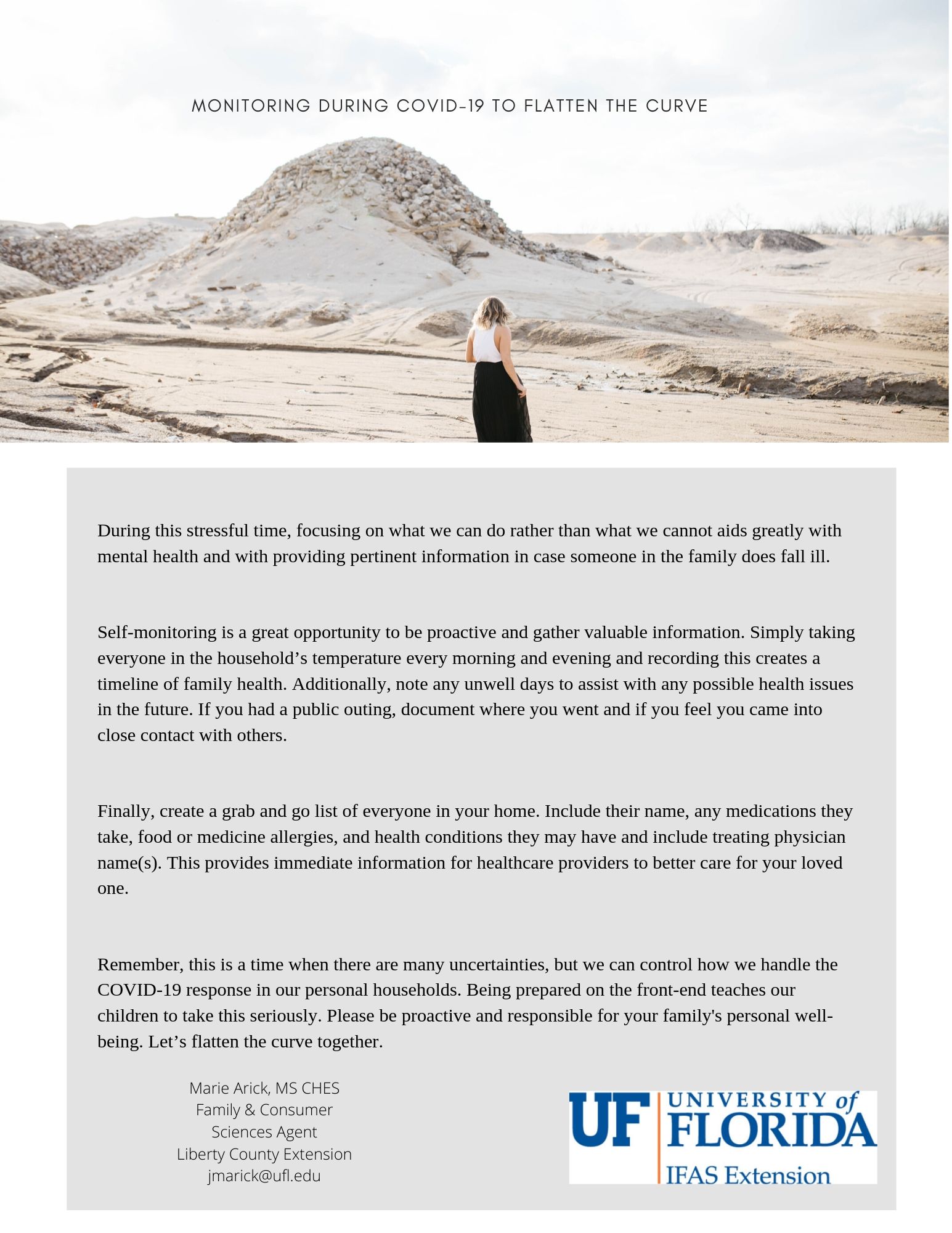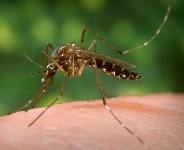
by Julie McMillian | May 11, 2020
What does your morning and evening routine consist of? Now that we are adjusting to our new normal of staying at home and social distancing, many routines are different than before. How about starting a routine of walking 30 minutes or an hour each day? There are so many positive benefits to even just adding 15 minutes to your schedule and most everyone, including children, can do it.

Walking is a great form of exercise that nearly everyone can do. (Photo source: Lyon Duong, UF/IFAS)
Walking improves your mood and reduces stress and anxiety. Who doesn’t need that kind of positive influence in their life right now? If you walk in the morning, it will provide you with energy for the rest of the day and walking in the evening helps you to sleep better at night. Taking a few extra steps each day can add some time to clear your head and add to your energy level while creating a positive mindset for other activities.
One of the other benefits of walking is burning calories. Burning calories may lead to weight loss. It seems that almost every American is always looking for a way to improve the fitness of their body. By exercising during a walk, you build stronger muscles, ligaments and tendons. Physically, walking can reduce your hips, tighten abdominal muscles, strengthen your arms, and tone your legs. Walking gives you a chance to improve balance, coordination and flexibility. Your feet can help to reduce the load on other joints while keeping knee joints healthy and lowering the risk of blood clots. Walking makes your heart stronger and reduces risk of stroke. A research team from the University of Michigan Medical School says that people who are in the 50s-60s age bracket who exercise regularly are 35 percent less likely to die in the next eight years than those who do not. Therefore, some walking each day could help you lead to a longer life.
Now that we have so many reasons to take a stroll each day, we must make sure to walk correctly to avoid injury. It is important to move freely and naturally while swinging your arms to avoid back problems. Keep your shoulder back with your head held high and eyes forward. Position your feet straight and push off with your hind leg to engage your hips. Watch for traffic if you are walking by a highway and of course practice social distancing for now. Maybe later ask a friend to join for a social aspect and to have accountability to someone. Keep a log to track progress. The CDC recommends 150 minutes of moderate activity per week to be considered active adults. That should add up to about 7,000 to 8,000 steps a day but if you can get 10,000, go for it! It is a great time to get into this daily routine and doesn’t require any special equipment or memberships.
So what are you waiting for? There is no better time to start stepping.
For more information on healthy living or other extension related topics, contact your local UF/IFAS Extension Agent.
Additional Resources:
Healthstyle: A Self-Test (UF/IFAS Extension)
Healthy Living: Beating Barriers to Physical Activity (UF/IFAS Extension)
Improving Savings, Health, and Happiness by Modifying How the Family Operates the Home (UF/IFAS Extension)
Walking: Your Steps to Health (Harvard Health)
UF/IFAS Extension is an Equal Opportunity Institution.

by Dorothy C. Lee | Apr 16, 2020
Even during our ‘Safer at Home’ orders, we must use our vehicle if we are essential workers or run necessary errands. Learn safe car cleaning practices from UF IFAS Extension Escambia County to help minimize your risks during local travel.
Disinfect Your Car
During this time of extreme sanitizing don’t forget your car.
- Cleaning the steering wheel is a must. Use disinfecting wipes.
- Touchscreen displays require extra care, disinfect displays using a microfiber cloth sprayed with eyeglass cleaner.
- Vacuum seats and floorboards thoroughly and often.
- Wipe consoles and dashboards with hot soapy water, rinse and let air dry.
- Clean door handles with disinfecting spray or wipes.
by Julie McMillian | Apr 16, 2020
Can I go outside during the Coronavirus Pandemic? Is it a smart idea? As we are instructed by the CDC to isolate ourselves and embrace social distancing, we may start to feel a little restless or stir crazy after staying inside for a long period of time. Spring weather is great, especially in the mornings and evenings, here in Florida. Normally we would be entering a time when people are the most active outdoors. This year we must be a little more creative when deciding what we can do to enjoy daily activities outside of our home.

Family playing outside
Photo Source: UF/IFAS
Children usually need no encouragement to go outside. Youth that spend more time outside have positive outcomes with their health by interacting with their natural environments. They are curious about the world around them and their experiences outside will benefit them in regard to a positive attitude toward their environment. Adults have those same benefits but tend to forget or not have time in everyday life as it gets busy.
Therefore, the question is, what can we do that will keep us at a distance and be educational and productive? If you live in less populated areas, you might plant a garden, build an outside project that you have been putting off, enjoy a picnic, or hike and sight-see through the woods. If in the city and able, go for a walk or jog with your dog, take a bike ride or do some yoga especially if you are missing the gym. Your medical professionals will be glad you are participating in some physical activity and breathing in some fresh air. You might want to get in a lawn chair and just relax and soak up some vitamin D from a few minutes in the sun.
If you have recently become your child’s teacher, you can have learning activities outside. Science and math can be integrated by building a house out of natural resources, allowing students to collect materials and build while fostering creativity. Talk about ecosystems of trees and plants and how they might provide a home for insects or animals. Students could take a piece of paper outside and define what they see in their yard, integrating spelling and vocabulary, or write a short story based on what they hear and observe.
We are living and facing challenges today that we probably have not encountered before, so it is a good time to find an outlet to relieve stress and detour the onset of depression. The web is full of ideas for all ages if you run out of inspiration and some days we do. Remember to keep a safe distance from others, wash your hands frequently and follow your local guidelines but don’t be afraid to try something new that may be out of your ordinary routine. It might turn out to be your favorite hobby.
For more information on healthy living or other extension related topics, contact your local UF IFAS county extension office.
Supporting information for this article can be found in the UF/IFAS Extension EDIS publications:
Kids in the Woods
Why is Exposure to Nature Important in Early Childhood
COVID-19 Preventative Measures
UF/IFAS Extension is an Equal Opportunity Institution.

by Marie Arick | Mar 28, 2020
Monitoring during COVID-19 to flatten the curve; let’s focus on what we can do.

Flatten the Curve

by Marie Arick | Mar 28, 2020
Preventing the spread of illness is a high priority. It’s easy to overlook some high traffic areas.
Help prevent the virus and bacteria spread with this nightly cleaning ritual.

Tips to help prevent virus and bacteria from spreading

by Kendra Hughson | Mar 26, 2020

Mosquito Aedes Aegypti_2020
Photo Source: UF/IFAS
Author: Whitney Cherry
COVID-19 has been driving public and private discussion as of late. But, we have to stay vigilant in working against all public health threats. One of the threats we typically start talking about this time of year is mosquito borne illnesses and preventative mosquito control. Not only are mosquitoes pests, but they can transmit some diseases we wouldn’t want, even under normal circumstances.
So what’s the reality? While the incidence of mosquito borne illness is much lower with the advent of modern medicine and basic public practices of wearing bug spray and dumping or treating standing water, it’s definitely not unheard of. The Zika scare is not such a distant memory afterall. And EEE (eastern equine encephalitis) was at an unusual high last year in horses in the panhandle. So what can we do?
With recent flooding in some areas and the weather warming, we can expect to see increasing populations of mosquitoes. Additionally, as the weather warms, we all tend to spend more time outside, increasing our likelihood of mosquito bites. Further exacerbating the situation are the widespread quarantine measures keeping many of us home. The late afternoon and early evening hours bring ideal weather to step outside and enjoy a little time away from TV and computer screens. We encourage fresh air and exercise outdoors, but we also encourage basic safety. So wear bug spray if you’re outside early morning and especially near, during, or shortly after dusk. Wear long sleeves and pants and socks if you can stand it. And keep standing water out of containers on your property. If this isn’t possible, look for safe water treatment options. The most prevalent spreaders of disease (Aedes aegypti) actually require these containers of water to complete their life cycle.
For more information on this or other Extension-related topics, call or email your local extension office.
Related mosquito information: http://edis.ifas.ufl.edu/results.html?q=mosquito+borne+illness&x=0&y=0#gsc.tab=0&gsc.q=mosquito%20borne%20illness&gsc.page=1










